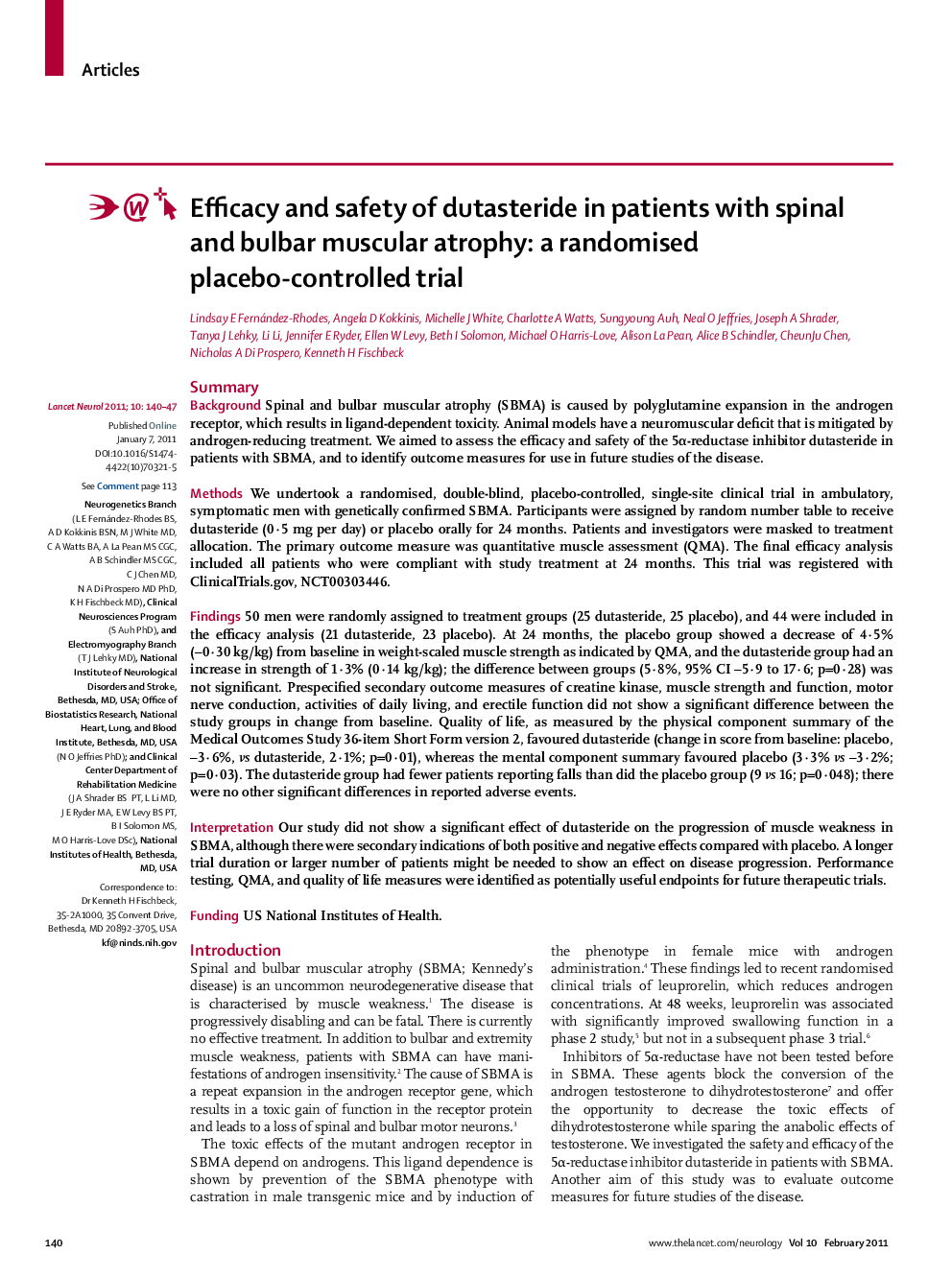| Article ID | Journal | Published Year | Pages | File Type |
|---|---|---|---|---|
| 3066894 | The Lancet Neurology | 2011 | 8 Pages |
SummaryBackgroundSpinal and bulbar muscular atrophy (SBMA) is caused by polyglutamine expansion in the androgen receptor, which results in ligand-dependent toxicity. Animal models have a neuromuscular deficit that is mitigated by androgen-reducing treatment. We aimed to assess the efficacy and safety of the 5α-reductase inhibitor dutasteride in patients with SBMA, and to identify outcome measures for use in future studies of the disease.MethodsWe undertook a randomised, double-blind, placebo-controlled, single-site clinical trial in ambulatory, symptomatic men with genetically confirmed SBMA. Participants were assigned by random number table to receive dutasteride (0·5 mg per day) or placebo orally for 24 months. Patients and investigators were masked to treatment allocation. The primary outcome measure was quantitative muscle assessment (QMA). The final efficacy analysis included all patients who were compliant with study treatment at 24 months. This trial was registered with ClinicalTrials.gov, NCT00303446.Findings50 men were randomly assigned to treatment groups (25 dutasteride, 25 placebo), and 44 were included in the efficacy analysis (21 dutasteride, 23 placebo). At 24 months, the placebo group showed a decrease of 4·5% (−0·30 kg/kg) from baseline in weight-scaled muscle strength as indicated by QMA, and the dutasteride group had an increase in strength of 1·3% (0·14 kg/kg); the difference between groups (5·8%, 95% CI −5·9 to 17·6; p=0·28) was not significant. Prespecified secondary outcome measures of creatine kinase, muscle strength and function, motor nerve conduction, activities of daily living, and erectile function did not show a significant difference between the study groups in change from baseline. Quality of life, as measured by the physical component summary of the Medical Outcomes Study 36-item Short Form version 2, favoured dutasteride (change in score from baseline: placebo, −3·6%, vs dutasteride, 2·1%; p=0·01), whereas the mental component summary favoured placebo (3·3% vs −3·2%; p=0·03). The dutasteride group had fewer patients reporting falls than did the placebo group (9 vs 16; p=0·048); there were no other significant differences in reported adverse events.InterpretationOur study did not show a significant effect of dutasteride on the progression of muscle weakness in SBMA, although there were secondary indications of both positive and negative effects compared with placebo. A longer trial duration or larger number of patients might be needed to show an effect on disease progression. Performance testing, QMA, and quality of life measures were identified as potentially useful endpoints for future therapeutic trials.FundingUS National Institutes of Health.
